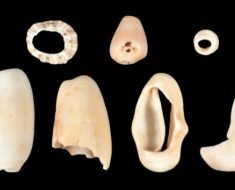In a recent study published in the Nutrients journal, researchers evaluated using bee pollen as a nutrient source. The study focused on understanding bee pollens' nutrient richness and possible role in the pathophysiological mechanisms linked to imbalanced nutrient levels.
 Study: Translational Research on Bee Pollen as a Source of Nutrients: A Scoping Review from Bench to Real World. Image Credit: TippaPatt/Shutterstock.com
Study: Translational Research on Bee Pollen as a Source of Nutrients: A Scoping Review from Bench to Real World. Image Credit: TippaPatt/Shutterstock.com
Background
Healthy nutrition is becoming increasingly important in the field of biomedical sciences. The role of nutritional deficiencies and imbalances in causing global public health issues, including cardiovascular and metabolic diseases, has been extensively proven.
Bee pollen has been identified as a potential aid in reducing health issues through nutritional interventions. Bee pollen is currently under extensive study and is a highly nutritious and well-balanced source of nutrients.
About the study
In the present study, researchers explored evidence supporting bee pollen (BP) usage as a nutrient source.
A scoping review was conducted to evaluate the existing evidence on the nutritional benefits of BP in both standard and pathophysiological environments. The team employed available data to assess the evidence, identify areas lacking knowledge, and create recommendations for future study.
Effective strategies have been developed, and efforts have been made to establish standards for framing, normalizing, and reporting conditions and achievements.
The Preferred Reporting Items for Systematic Reviews and Meta-Analysis Extension for Scoping Reviews (PRISMA-ScR) guidelines checklist, which was developed based on the Enhancing the Quality and Transparency of health research (EQUATOR) group's approaches and released in 2018, is one of the recommended guidelines for systematic reviews and meta-analyses.
The focus was primarily on publications released within the past four years. The initial literature research revealed that there was repetition among bioactivity-related parameters studied for BP. Two previous general reviews involving BP were published before 2020.
Scientific data for analysis were gathered from various international databases specializing in medical and pharmaceutical fields, including PubMed, Scopus, ScienceDirect, Cochrane Library, Web of Science, and Google Scholar. The team initially searched using the term "bee pollen" to identify relevant publications.
Results
The team found that BP is a nutrient-rich food source containing proteins, minerals, vitamins, unsaturated fatty acids, and oligo-elements. It is also low in calories and generally well-tolerated and safe, except for the possibility of allergic responses or external pollution, which can be managed and predicted.
Hazards associated with BP can result from external contamination, which can significantly impact pollen due to its sensitivity or from unfavorable storage and processing conditions.
Documenting pollen composition and considering patient sensitivity can prevent allergic responses to the product. Additionally, BP is safe for most physiological situations, including among children, the elderly, and recovering patients. BP is a valuable source of essential elements for pregnant and breastfeeding women.
A study of 27 commercial BP samples found that consuming 40 g of the product daily while breastfeeding can provide a significant portion of daily copper, manganese, iron, and selenium needs.
A review of over 100 published studies found that the primary components of BP, listed in order of weight or weight importance, are carbohydrates, lipids, proteins, ash, fibers, and other elements. The presence of polyols in the carbohydrate matrix contributes to its lower caloric value and helps maintain a balanced intake of energy sources and other nutrients.
BP's rich composition makes it ideal for human nutrition, as it can help rebalance or prevent various nutritional deficiencies along with pathophysiological conditions.
The most extensively researched characteristic of BP is its antioxidant activity. Furthermore, the significance of BP usage lies in its potential as an anti-inflammatory agent.
The activity of bee pollen composition varies greatly depending on various factors such as plant and bee species, geographical region, timing, soil type, processing, and environmental conditions. Comparative studies have found that multi-floral pollens have stronger antioxidant activity than mono-floral pollens.
BP has significant anti-inflammatory effects on various types of inflammation, such as localized and systemic forms like digestive wall inflammations and neuroinflammation.
BP's anti-inflammatory potential has been extensively researched, with different experimental studies highlighting various mechanisms.
The anti-inflammatory phytochemicals found in BP, including polyphenols, as well as other phytonutrients such as peptides, lipids, polysaccharides, and other compounds, have been linked to these activities.
Additionally, the team noted that the anti-inflammatory activity of BP varies based on bee species, in addition to differences based on botanical origin.
Conclusion
Overall, the study findings suggested that addressing the gaps identified in their study is crucial for improving research on BP.
The researchers recommend utilizing high-throughput technologies like omics sciences and computational-based simulation techniques to analyze the vast and diverse data.
-
Kacemi, R. and Campos, M. (2023) "Translational Research on Bee Pollen as a Source of Nutrients: A Scoping Review from Bench to Real World", Nutrients, 15(10), p. 2413. doi: 10.3390/nu15102413. https://www.mdpi.com/2072-6643/15/10/2413
Posted in: Medical Science News | Medical Research News | Miscellaneous News | Healthcare News
Tags: Anti-Inflammatory, Antioxidant, Bee, Breastfeeding, Carbohydrate, Children, Contamination, Copper, Fatty Acids, Food, Inflammation, Lipids, Manganese, Minerals, Nutrients, Nutrition, Peptides, Pollen, Pollution, Public Health, Research, Selenium, Vitamins

Written by
Bhavana Kunkalikar
Bhavana Kunkalikar is a medical writer based in Goa, India. Her academic background is in Pharmaceutical sciences and she holds a Bachelor's degree in Pharmacy. Her educational background allowed her to foster an interest in anatomical and physiological sciences. Her college project work based on ‘The manifestations and causes of sickle cell anemia’ formed the stepping stone to a life-long fascination with human pathophysiology.
Source: Read Full Article





